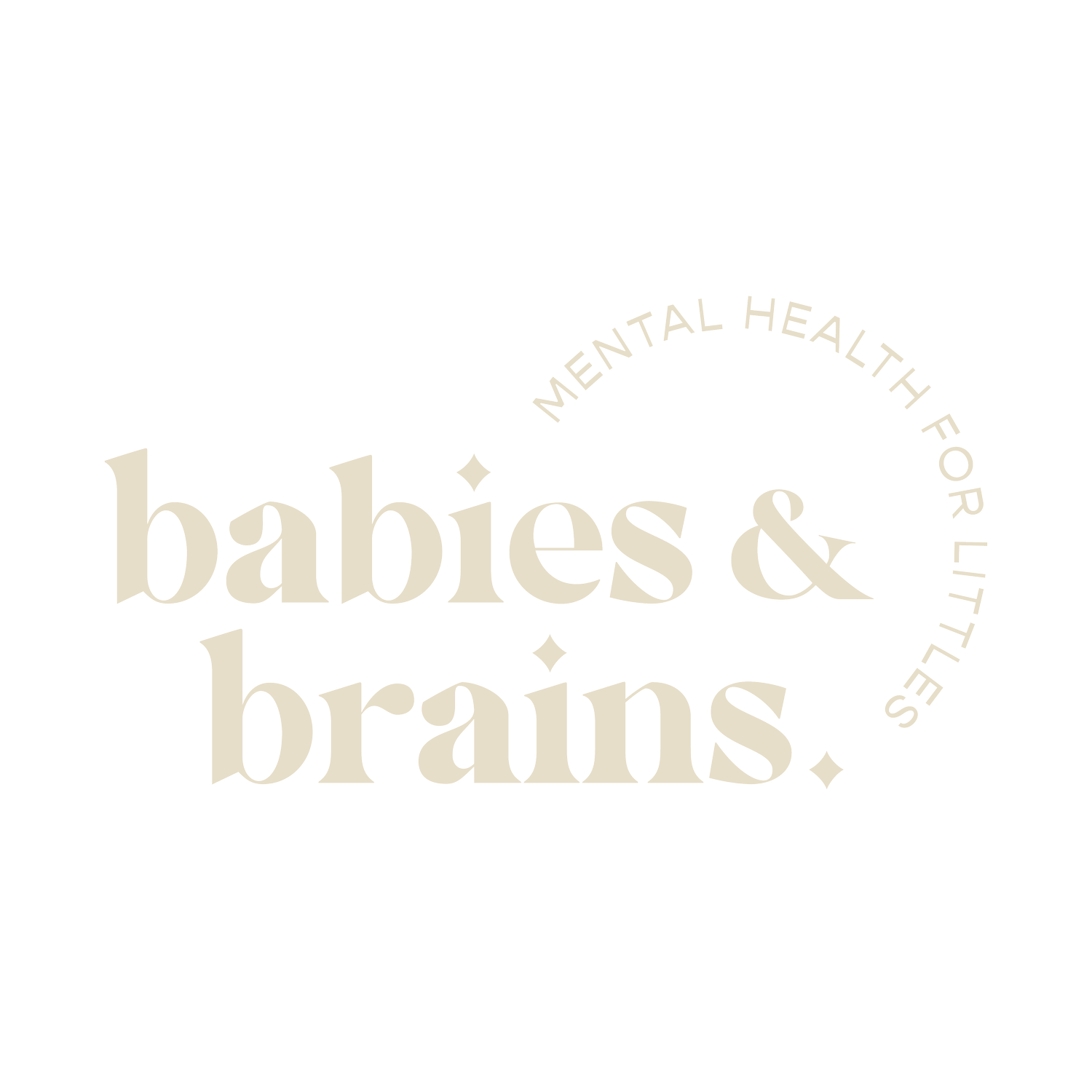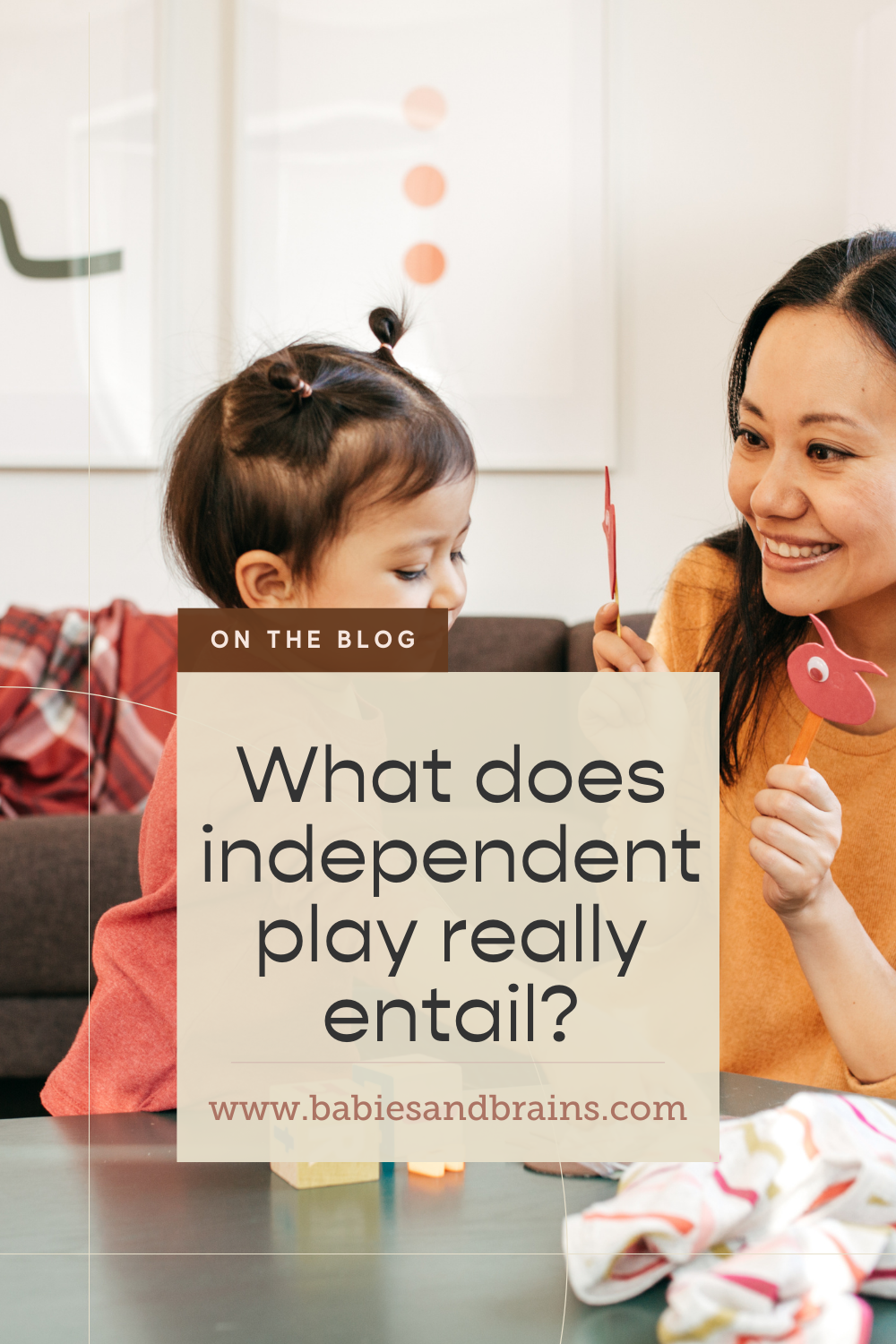What Does Supporting Independent Play Really Entail?
When most people think of attachment, they think of closeness, nurturance, bonding. One of the lesser focused on elements of the attachment relationship is the role of supporting our child’s exploration. Meaning, supporting our children as they learn more about their world, their abilities, and their interests.
There’s a lot of talk online these days about “independent play” and how important it is for development. I’m not saying that it isn’t important, but, I think our understanding of what “independent play” entails is varied, and has a lot of confusion sprinkled in. When someone thinks of independent play, they often imagine their child playing happily in another room while they get to sip their coffee in peace for a moment. For some parents and children, this may be the case, but for others, it often does not look this way.
It is important to know that our children do not have to happily be in another room out of sight for this to be considered “independent play.” What many people are actually referring to when they talk about independent play is parents creating an environment where children can explore their interests and engage without too much disruption from the parent. This does not mean the child should never seek out the parent, nor does it mean the parent should never participate in play.
When it comes to attachment, when we think about a child “exploring their world,” it again, does not mean that they are off on a solo adventure. Rather, it means that their focus is on their environment. This means that your child can be exploring right from your lap. If your child is right next to you, but their focus is on the toys in their lap, or your infant is watching the ceiling fan spin while you hold them, that counts as exploration!
When they shift their gaze back to you as an infant, walk back to you as a toddler, hug you, snuggle you, say, “Look at this!”, or just glance back to check if you’re still there, that’s them getting their need for connection fulfilled so that they can continue playing. It’s like they’re filling up their gas tank to continue on with their adventure (often referred to as “filing up their cup”).
Children who are more sensitive, meaning, their nervous systems may be more sensitive to environmental stimuli and therefore they may become dysregulated more easily, they may check in more often than other children. Also, younger children typically check in more often than children who are older and have gradually gained more regulatory capacities. When your chidl is checking in with you, this isn’t your child being “clingy,” overly “needy,” or even lacking “independent skills.” Rather, it is your child being attuned with their nervous system and seeking the support they need to regulate and return to baseline. I like to think of it as them being rather intuitive, actually.
Now, of course, there isn’t a committee that has decided the exact definition of independent play, so there are going to be some conflicting interpretations out there. I have seen people say, “Play is for children, not adults.” Implying that adults should almost never be involved in play. Then, of course, on the other end of the spectrum, there are “helicopter parents” who do not allow their children any freedom in exploration and frequently intrude.
In my professional opinion, and when we consider what we know about attachment theory, to support our child’s play, it is important for us to:
1) Remain calm to let our children know they are safe to explore (because if we aren’t calm, this may send the signal that it’s dangerous for them to leave us and lead to them not exploring). Of course, if the situation isn’t safe, you will have to intervene and rightfully not remain uninvolved.
2) Create a safe space with appropriate play opportunities. This means that the home is baby-proofed, or the child has a designated space where they can freely play without getting harmed. This means there are also age-appropriate things for your child to explore. This doesn’t mean they have all of the fanciest toys all out in one room. It can mean that a baby has opportunities to observe their environment, the fan on the ceiling, their parents’ faces, etc. Or, that a toddler has recycled bottles and pots and pans to bang on and pretend play with.
3) Follow our child’s lead. Observe them. If they are happily exploring something, let them. If they want to share something with you or invite you in, join them and delight in them. If they want to pretend a spatula is a teacher, let. them. Play is not your time to control the narrative. It is your child’s space to explore, learn, and grow.
If you follow these steps, you may feel like you aren’t doing anything, but really, your relaxed, available presence is extremely supportive of your child’s play!
Want to learn more about attachment? My Parenting Through Attachment course will be launching again this spring. Click here to get on the waitlist to get notified about the launch details! (No strings attached. It is simply an email list to give you important information about the course!)
Was this helpful?
Click the photo to save to your Pinterest board to reference later!



